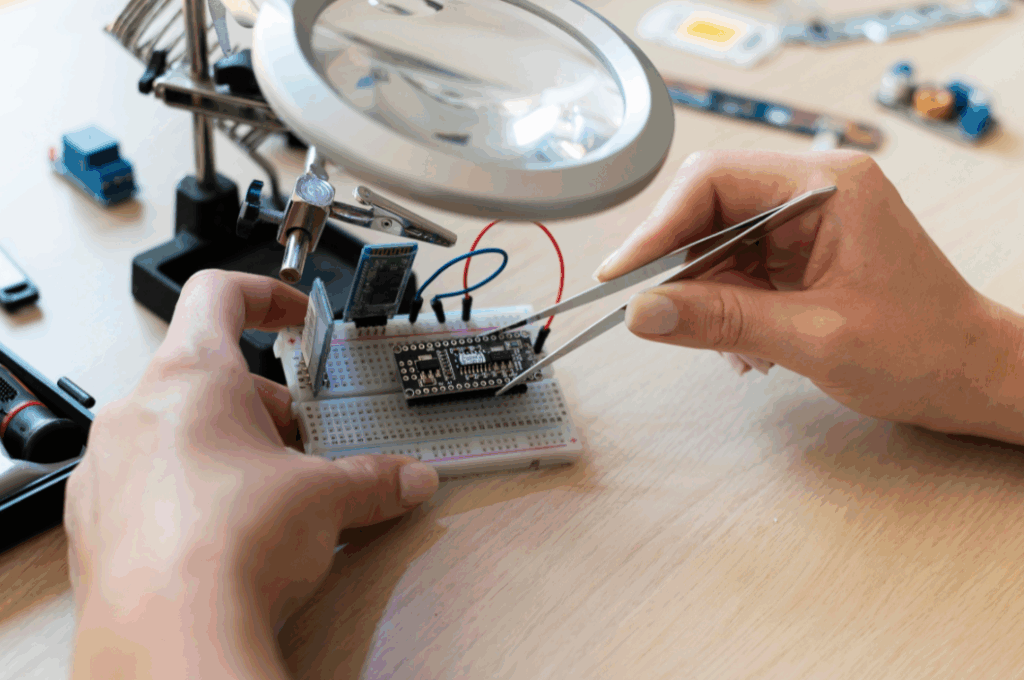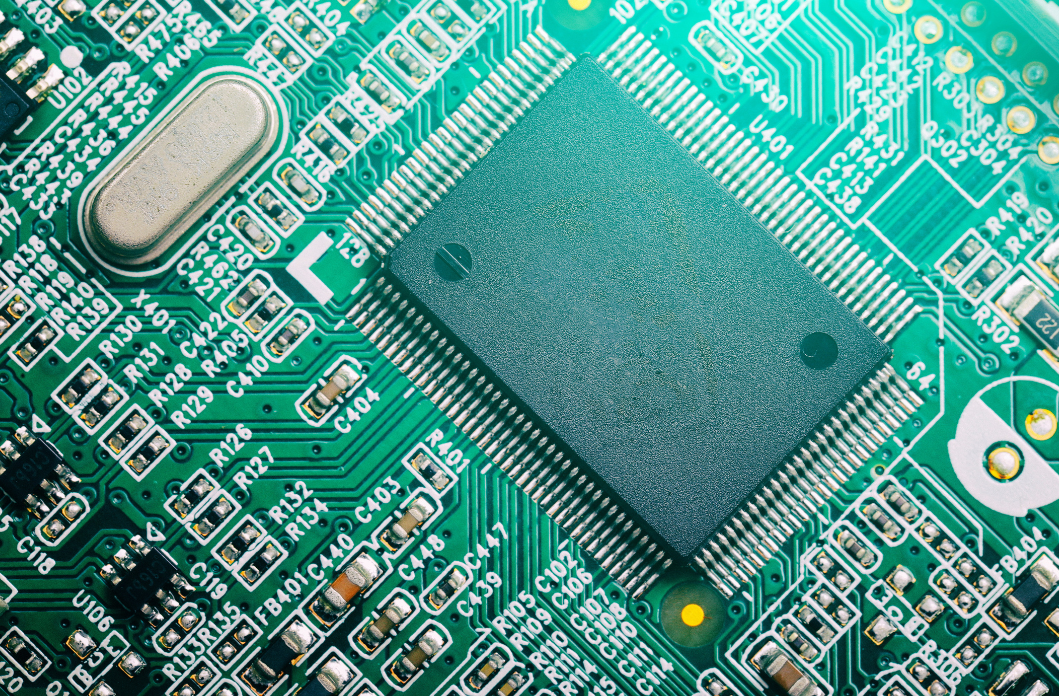For anyone working with marine electronics PCBs, the sea brings more than just moisture; it brings a lot of problems.
Salt spray, humidity, and splashing water all pose real threats to exposed circuitry. So, do maritime PCBs need to be waterproof? Well it goes without saying; absolutely. And a waterproof maritime PCB isn’t just useful, it’s essential.
In this article, we’ll look at why water and salt cause damage, how to prevent it, and what goes into smart PCB design for marine environments.
The Environmental Challenges of Marine Electronics

What makes the sea such a difficult place for electronics to survive?
For starters, there’s the humidity, not just damp air, but a constant presence of moisture that sneaks its way into unprotected components. Then you’ve got salt spray, which tends to cling to surfaces and kickstart corrosion quicker than you might expect. And if that was not enough, the temperature can swing dramatically, especially on ships moving between climates, causing condensation to form inside sealed areas that were once thought safe.
These aren’t minor annoyances. For marine electronics PCBs, they’re daily hazards. If left unchecked, salt and moisture work together to eat away at solder joints, delaminate layers, and eventually short entire systems. That’s why good PCB design for marine environments starts with understanding what you’re up against. It’s not just about making it work; it’s about keeping it working, even in the harshest offshore conditions.
How Moisture and Salt Corrosion Affect PCBs
Once moisture gets in, things tend to go wrong fast, especially when salt is involved. Together, they don’t just sit on the surface; they trigger reactions that gradually destroy components from the inside out. One of the main culprits is electrochemical migration, a process where metal ions move across a PCB under the influence of voltage and moisture, often forming tiny conductive paths that eventually short-circuit the board.
Salt also accelerates the corrosion of metal traces, creating hidden damage that might not show up until it’s too late. This kind of degradation doesn’t just stop at performance dips; it leads to full-blown failures.
Common failure modes in salt-prone environments:
- Corrosion of copper traces and connectors
- Delamination between PCB layers
- Swelling or warping of board materials
- Solder joint degradation
- Short circuits from conductive salt residue
- Component breakdown due to trapped moisture
Methods of Waterproofing for Long-Term Reliability
There’s more than one way to keep a marine electronics PCB protected. The right method often depends on where the board is going and how much it’ll be exposed to the elements.
At the core, though, each approach is trying to solve the same problem: keep moisture and salt from ruining the circuitry.
Conformal coatings are often the first layer of defence. These thin, protective films, whether acrylic, silicone, or urethane, cover the board and help block contaminants. For tougher situations, engineers often turn to potting. This involves encasing the board in a resin compound that locks everything in place, offering full protection against moisture ingress.
Some opt for nano-coatings, ultra-thin layers that repel water without changing the board’s weight or flexibility. And let’s not forget protective enclosures, which combine physical barriers with sealing to block out moisture completely.
Comparison of waterproofing methods for PCBs:
| Method | Protection Level | Flexibility | Cost Range |
| Conformal Coating | Moderate | High | Low to Medium |
| Potting | Very High | Low | Medium to High |
| Nano-Coating | Light moisture barrier | Very High | Medium |
| Protective Enclosure | High (external only) | Depends on design | Medium |
These solutions often work best in combination, for example, a PCB conformal coating marine application inside a sealed housing, or potting for waterproof PCBs used in underwater units.
Testing Standards for Marine Grade Circuit Boards
Before a waterproof maritime PCB can be trusted to survive offshore, it has to prove itself. That means going through some serious testing, not just to check if it works, but to see how it holds up when things get tough.
These aren’t generic benchmarks either; they’re drawn from well-established protocols used across the military, aerospace, and maritime sectors.
For example, IPC-CC-830 is the go-to for verifying the performance of PCB conformal coatings in marine and harsh environments. Meanwhile, MIL-STD-810 includes procedures like salt fog testing that simulate years of exposure in just days. On top of that, there’s IP ratings, a more commercial way of showing how well a product blocks out water and dust.
Common standards for marine PCB testing:

- IPC-CC-830 (conformal coating qualification)
- MIL-STD-810 (environmental test methods)
- IP67/IP68 (ingress protection ratings)
- ASTM B117 (salt spray corrosion testing)
- ISO 20653 (vehicle equipment protection, marine adaptation)
Meeting these benchmarks isn’t just good practice; it’s often essential for building corrosion-resistant electronics that can handle life at sea.
Typical Applications in the Maritime Industry
PCBs in maritime settings are often working behind the scenes, but they’re doing some pretty important jobs. Here’s where you’ll usually find IP-rated PCBs hard at work:
- Navigation Systems – Supporting GPS, radar, and digital mapping tools.
- Engine Control Units – Handling real-time adjustments in propulsion and fuel systems.
- Marine Communication Devices – Ensuring smooth operation of radios, satellite links, and emergency beacons.
- Underwater Robotics – Powering sensors and motors in submersible inspection or research equipment.
- Onboard Lighting Systems – Managing energy-efficient lighting throughout the vessel.
Each of these applications depends on reliable, salt-resistant circuit boards built to last in extreme conditions.
Support Services for Waterproof PCB Design and Maintenance
Designing a waterproof maritime PCB is one thing; making sure it keeps performing, year after year, is something else entirely. That’s where having the right support matters.
Altimex doesn’t just supply marine electronics PCBs; we work closely with customers from concept to delivery. Whether it’s selecting the best conformal coating, choosing between potting and a sealed enclosure, or validating the build against marine-grade testing standards, our team brings real-world experience to the table.
And if things go wrong? Our refurbishment and testing services can help bring boards back to full working order, often without needing a complete redesign.
If you’re working on a project that needs corrosion-resistant electronics or just exploring your options for PCB design for marine environments, you can always contact us for a quick, helpful conversation.
From coatings and potting to design advice, PCB assembly and testing, the right strategy makes all the difference. And if you’re unsure where to start, Altimex is always ready to help with expert support in marine electronics PCB solutions.


